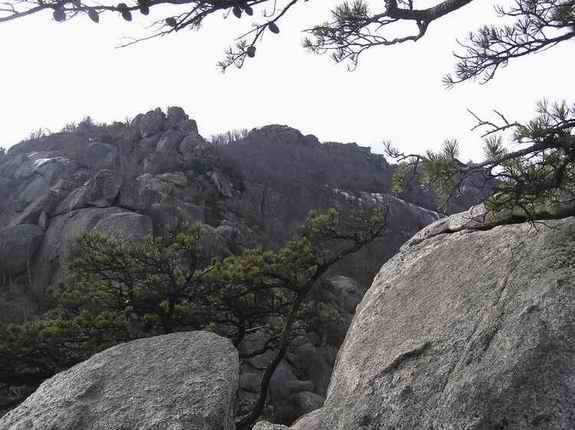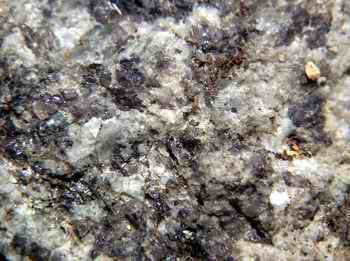|
Geologic Formation: Old Rag Granite
Old Rag Granite was named for Old Rag Mountain due to it's prominence at this location. Old Rag is short for Old Raggedy, which is a term that refers to the irregular serrated outline of the mountain ridge.
Old Rag Granite is about 1.2 billion years old. According to the geological theories of Plate tectonics and continental drift, it was formed by the Grenville orogeny (from the Greek oros meaning mountain) which occurred as parts of the current continents of North and South America, India, Australia and Antarctica collided to form a large continental mass named Rodinia. About 600 million years ago, Rodinia split apart to form the proto-Atlantic ocean, known as Iapetus, the proto-Atlantic (Iapetus was one of twelve Titans in Greek mythology; the father of Atlas from whom the name Atlantic was derived).
The erosion of the ancient Grenville Mountains proceeded throughout this period, depositing sediments to the east and west. The plate movement reversed and all the continents came together in one large landmass named Pangea (from the Greek pan for all and Ge for earth) about 300 million years ago. This caused the Allegheny orogeny which was the impetus for the formation of the Appalachian Mountains. When Pangea broke apart about 200 million years ago, the Atlantic Ocean was formed and subsequent erosion of the softer sedimentary rocks exposed the hard, resistant Old Rag Granite.
Old Rag Granite originally crystallized miles below the original land surface. It is estimated that it has only been exposed for about the last 200 million years. Since the breakup of Pangea, the westward movement of the American Plate has resulted in a period of minimal geologic stress.
Old Rag Granite is a plutonic, phaneritic, igneous rock. An intrusive or plutonic (for the Roman god of the underworld Pluto) rock is one that was formed deep below the surface by high temperature and pressure. Since this results in slow cooling, the grains of the minerals can grow large enough to be visible or phaneritic (from Greek phaneros, visible). Extrusive or volcanic igneous rocks are alternatively aphanitic. An igneous rock is any rock that crystallized from magma, the molten rock of the mantle.
Granite is the name given to an igneous rock according to the minerals that form its primary composition; quartz, potassium or alkali feldspar and plagioclase feldspar. Other minerals, such as biotite, a black form of mica, are present in smaller concentrations and serve as varietals for classification.
Feldspars are a group of minerals of similar composition that make up most of the earth's crust that ranges in thickness form 4 to 40 miles. Like quartz, they are comprised largely of silicon and oxide.
Old Rag Granite is characterized by white crystals of a type of alkali
feldspar called microcline. The
The dark mineral patches consist of blue quartz, a relatively unusual color thought to be due to the presence of small amounts of the titanium bearing minerals ilmenite and rutile. The quartz is found in elongated bands in a configuration known as foliation that indicate the direction of stresses that formed the granite.
There are a number of other dark mineral constituents that are found in Old Rag Granite in small amounts, including chlorite, epidote, magnetite and sphene. In addition, small reddish patches can be discerned on close examination. These are the mineral garnet, a semiprecious gemstone (when in pure crystal form) that make up about one percent of the total constituency. |

 microcline feldspar crystals are in a rectangular shape known as euhedral.
This is an indication of the slow cooling of the magma, as microcline is the
stable form of potassium feldspar below 400 degrees Centigrade.
microcline feldspar crystals are in a rectangular shape known as euhedral.
This is an indication of the slow cooling of the magma, as microcline is the
stable form of potassium feldspar below 400 degrees Centigrade.